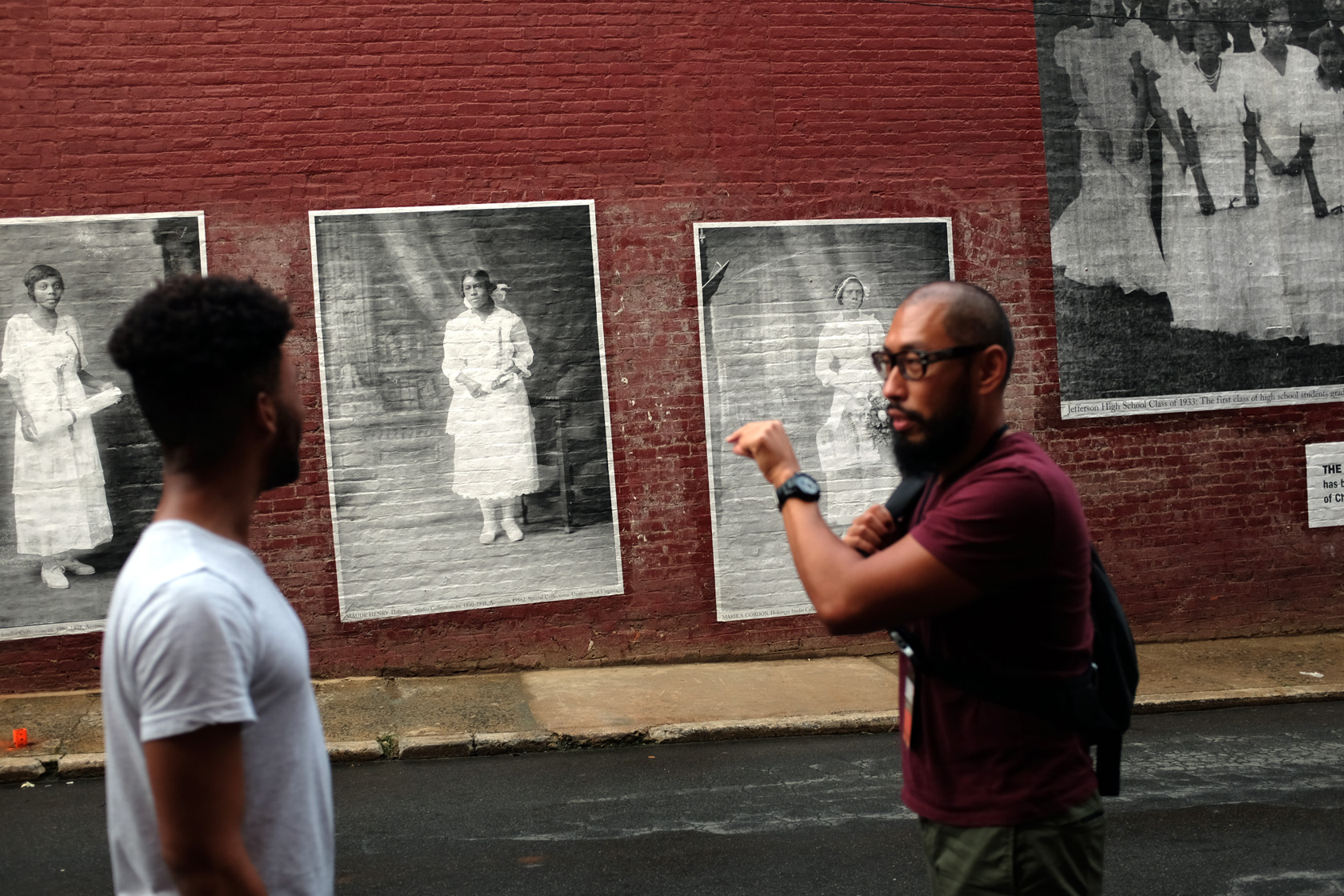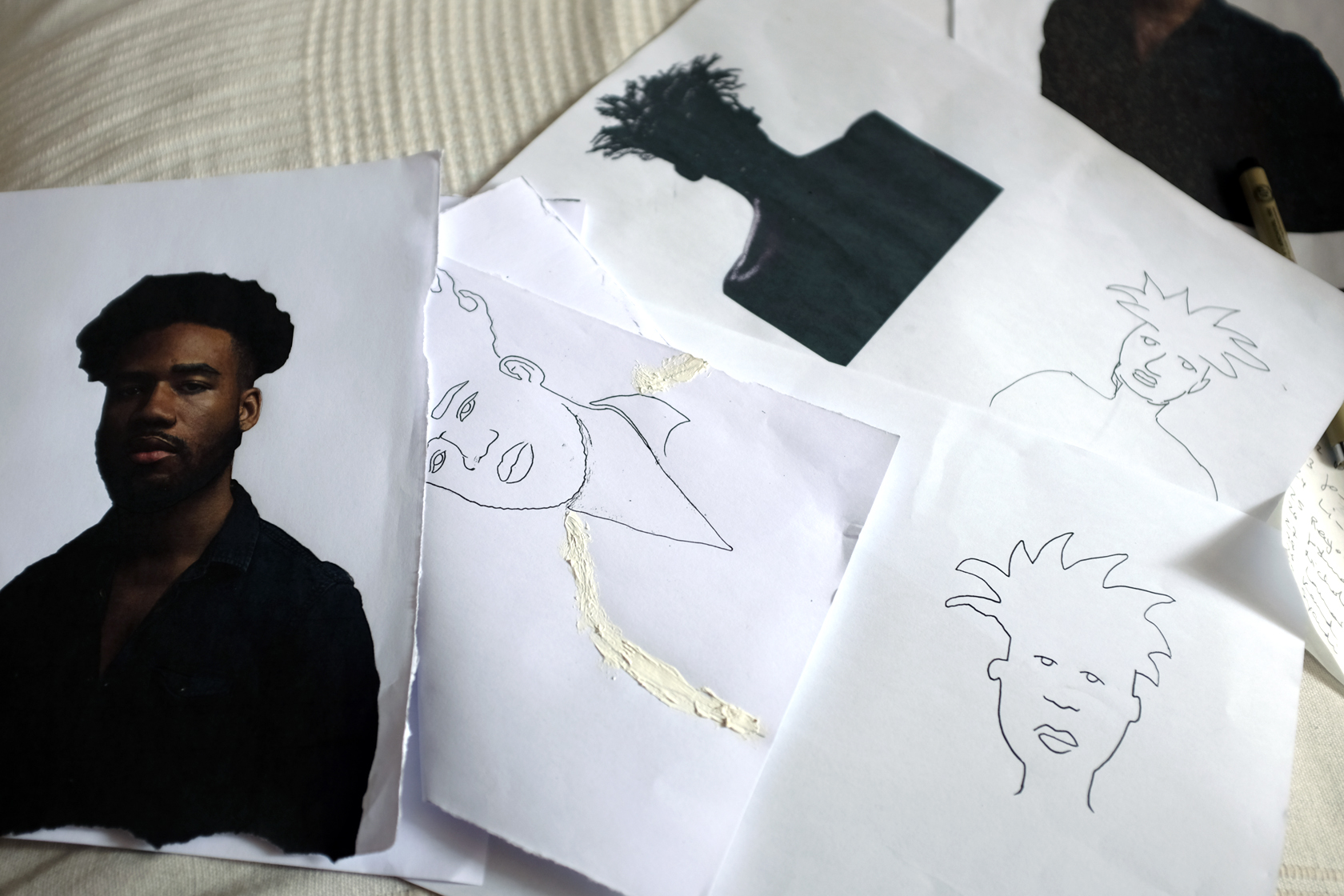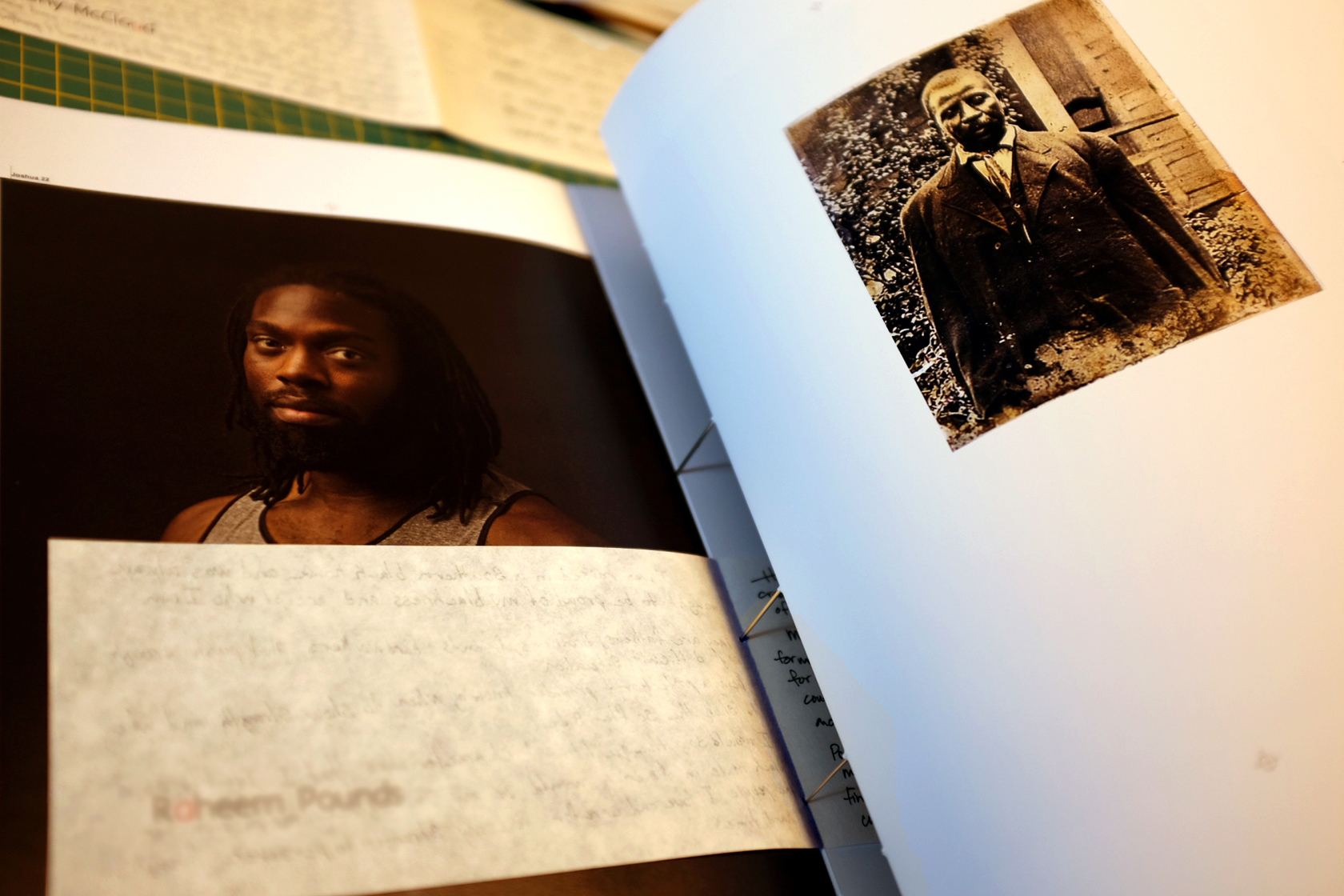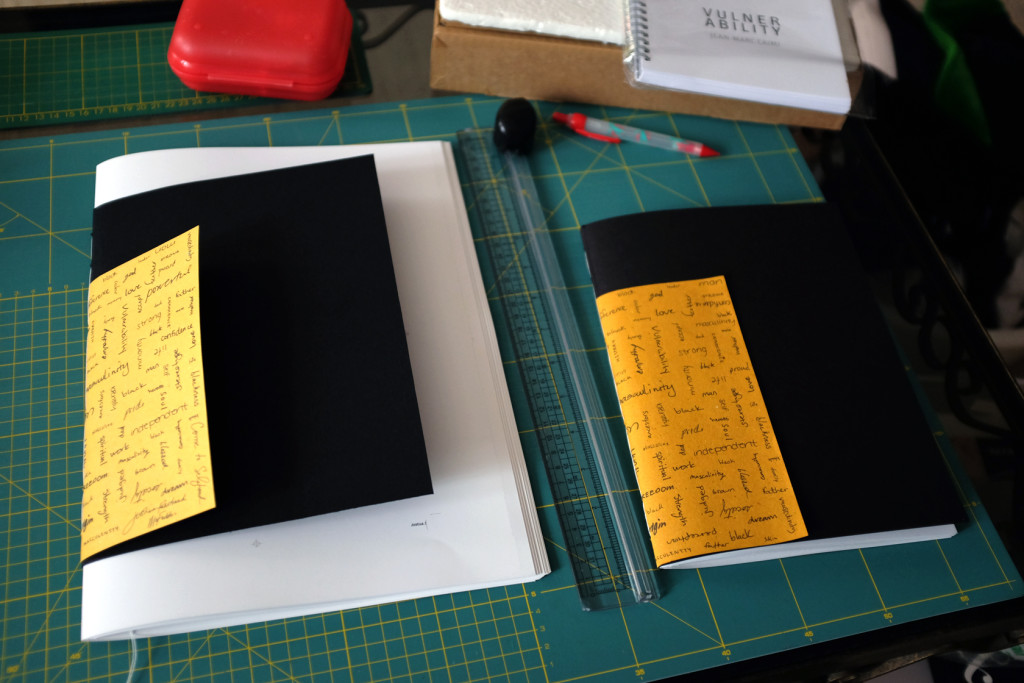
One year ago Joshua Rashaad McFadden and one of our team met at LOOK3. We were introduced by Zun Lee, whose book Father Figure we published in 2014. We shared thoughts over some slices of pizza and walked through shows together. Below you see a picture of Joshua and Zun in front of an outdoor exhibition curated by Andrea Douglas, that was right before bumping into Zanele Muholi, two of the highlights at last year’s festival.
One year later we’re here again with Joshua’s first book, Come to Selfhood. Order your copy now:
Come to Selfhood – The Book and the Special Editions
^^^ OUT OF STOCK AT CEIBA, please order your copy at Joshua’s store ^^^
Read more about the project in our interview below. See a few pictures of the book dummy, as we’re fine tuning the last details before going on press in just a few weeks. All pre-ordered copies will be signed by Joshua and shipped out first as we finish them up, starting in Fall 2016. 300 copies with 10 special editions (details to come), offset printed by Grafiche dell’Artiere, hand assembled and hand bound by ceiba editions in Italy.
What inspired you to start this project?
For the past five or six years I have been making projects about social issues like colorism, which is the discrimination against people based upon skin tone within the same ethnic group. I’ve also completed projects about police brutality, civil and human rights. With this project I wanted to be more personal, while still involving others.
I turned 25 in 2015, and I really started to think about my identity and what that means living in the USA as an African American man. Of course this thought was certainly magnified as a result of current events here in America. Events such as the police killing of Tamir Rice, and Treyvon Martin being gunned down in his neighborhood. Also, the mass shooting at Emanuel African Methodist Episcopal Church in downtown Charleston, South Carolina, and recently the Pulse gay nightclub shooting in Orlando, FL, USA. I thought about how these events relate to notions of identity. I also thought about what the true factors that influence African American Male identity are.

Tell us about your shooting process.
I try to keep the process very simple so that the experience isn’t overwhelming for the participant. We don’t take the photograph first. I like to spark a conversation, the participant takes time to complete a questionnaire. The answers are handwritten and done in person. They can take as long as they need to, I don’t rush them. The participant selects their own clothing. However, I do tell them not to wear a shirt with a logo on it.
The participant also chooses the archival photograph of their father figure, I scan it and return it to them.
You asked each participant a series of eight questions. How did you select them?
These are actually questions that I have asked myself from time to time, so it didn’t take long to make the list. Initially there were more than eight questions, but I didn’t want the questionnaire to be too long. They are very heavy questions, that take a while to answer.

How and why did you decide to include yourself in this project?
This project is an extension of myself, but initially I didn’t have a portrait in it. However, I felt that I needed to literally be in this project with my peers as another form of support. I included myself when I was about 75% complete with the series. I’m glad I did, because it gave me a chance to pay homage to my Grandfather, who was the pillar of strength to me and my family. It also provided a moment for much needed self examination.
What were you most surprised to discover while working with each participant?
I found out that the participants shared many of the same thoughts and experiences. The readers will be able to make the different connections as they make their way through the book.
How did you select the participants?
The project began with three guys I knew, as a trial. Then, once I figured out what I wanted to do, I just started asking people. Usually through conversation I’d bring up the project. Soon word was spreading a little and friends of friends began to participate. Sometimes I would just walk up to a guy and say “would you like to participate in a project I’m doing about …” I don’t ever do casting calls for projects like these. I like to keep it simple and organic.

Which one of their answers, words, has made the deepest impression with you?
All of the answers from the men have made such a huge impact on my life and how I think about these subjects. One of the answers that stuck out the most was from Nick. He speaks about how his father showed him what true love is. When his mother passed while he was a child, his father showed strength and vulnerability. His father played both paternal and maternal roles for him and his sister.
Tell us about the process of turning a multifaceted project into a book.
This was a long but rewarding process. It required great attention to detail. It is difficult to work like a machine and still be organic with the process. However, I believe that I achieved that here with Come to Selfhood.
What do you hope to achieve with the book?
I have created a visual dialog and with this book I am inviting people into our collective story. I want people to know that it takes great strength to be vulnerable, and vulnerability must not be mistaken for fragility. These men are taking action by controlling their narrative to break the curse of invisibility.

What advice do you have for people of color trying to make it in the photography industry?
You will find that many times you are the only one in the room. Always remember that you have a voice and that you have an important perspective.
You are quite young, where do you see yourself in 10 years time?
I turn 26 in July. In ten years I will certainly be creating projects on an even larger scale, long form documentaries and films. These projects hopefully will touch many lives across the globe. I hope to inspire as many people as I can to do good. I was privileged to meet Dr. Maya Angelou in Atlanta, GA before she passed in 2014. She said be a rainbow in someone’s clouds in her speech before we met. With my work I hope to be a rainbow in someone’s clouds.
OUT OF STOCK AT CEIBA, please order your copy at Joshua’s store:
